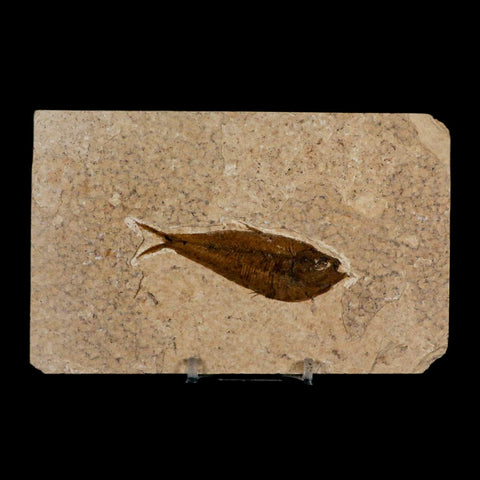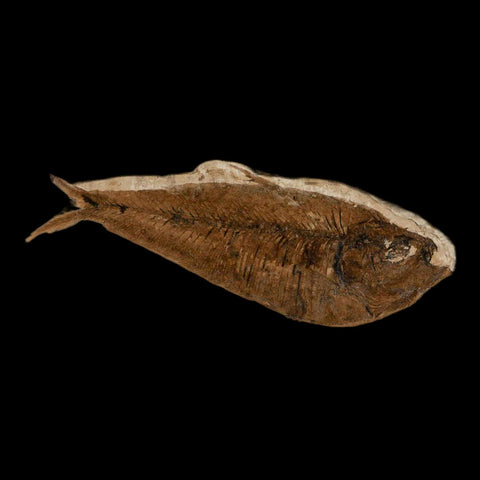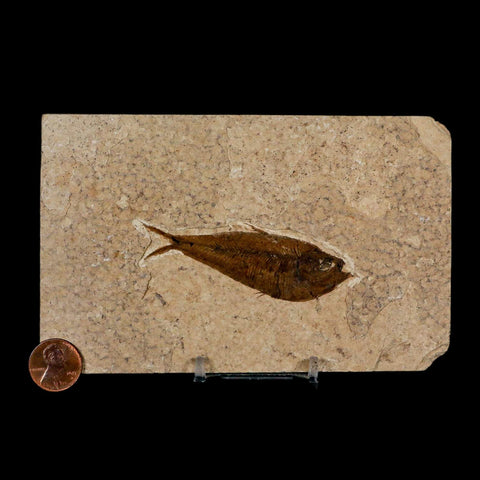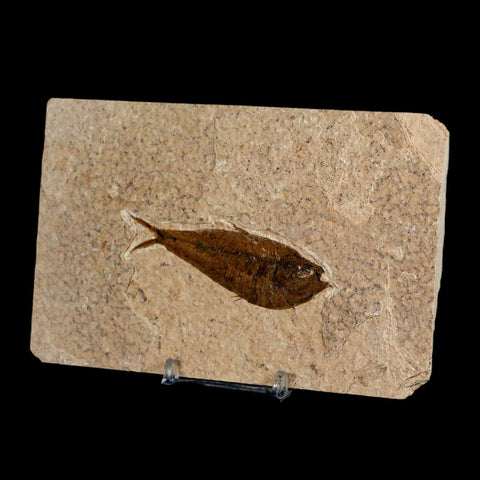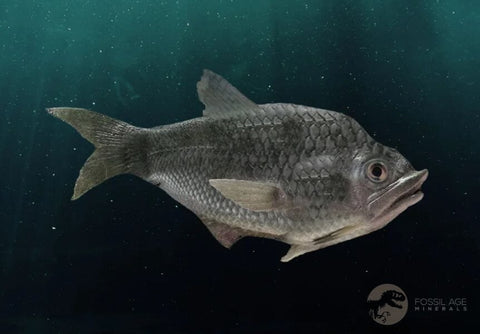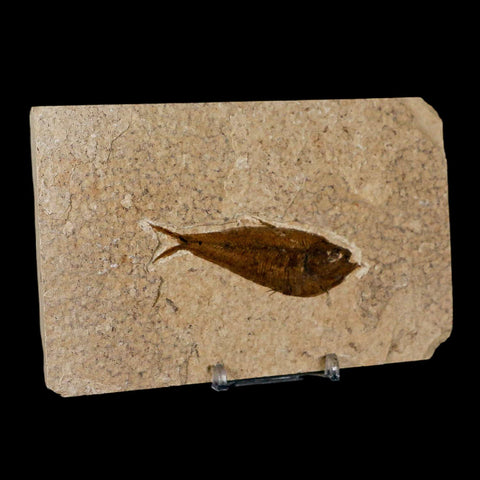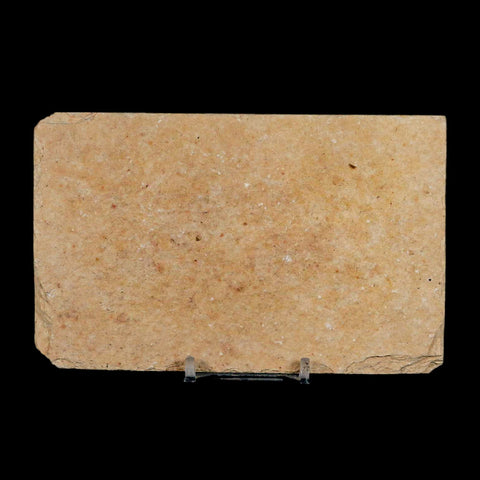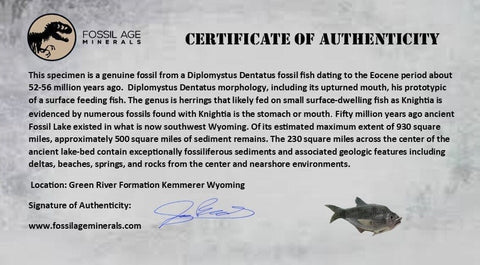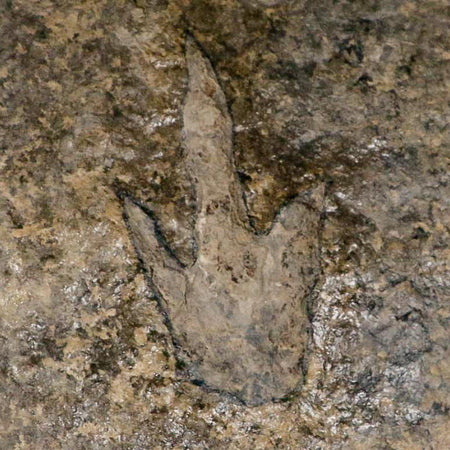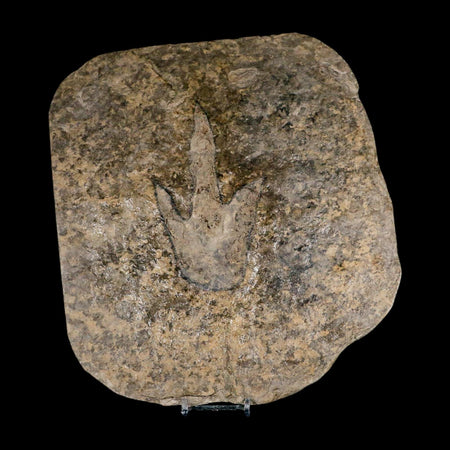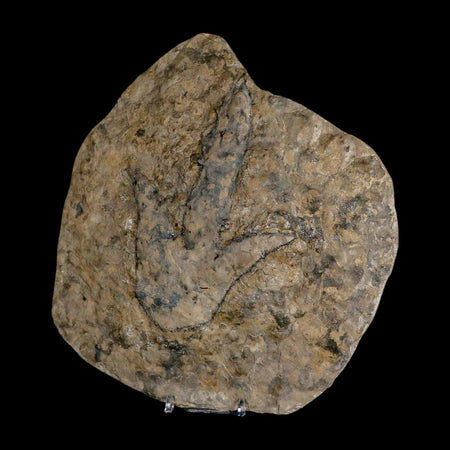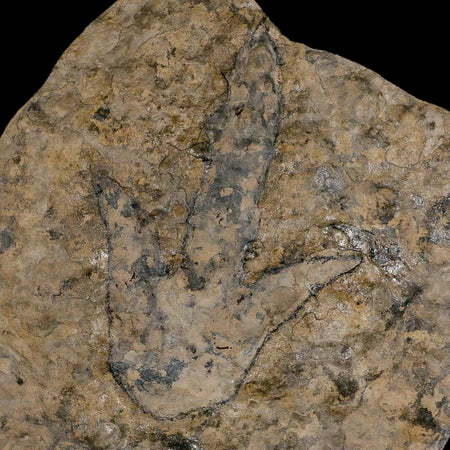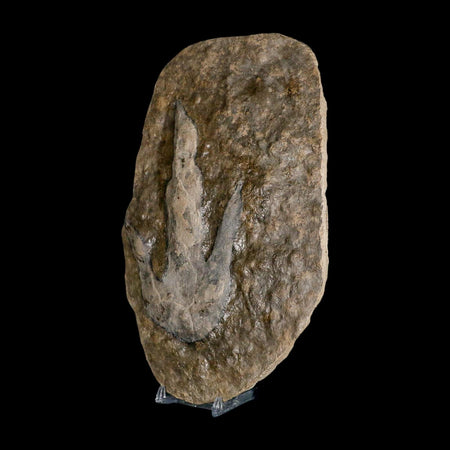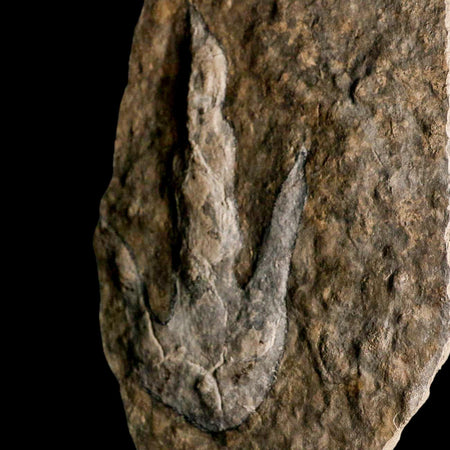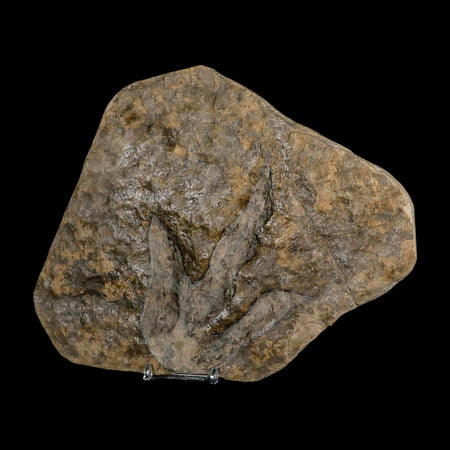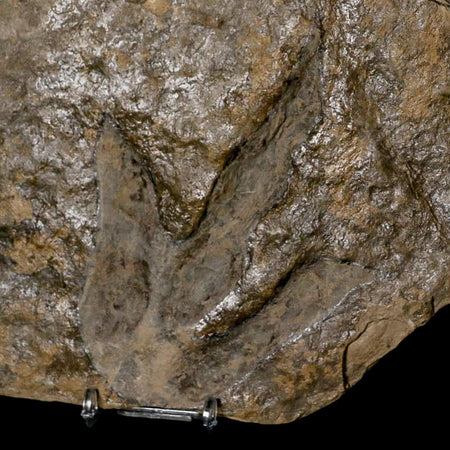3" Diplomystus Dentatus Fossil Fish Green River FM WY Eocene Age COA, Stand
Location: Kemmerer, Wyoming
Weight: 6.6 Ounces
Dimensions: 5.7 Inches Long, 3.6 Inches Wide, 0.3 Inches Thick (Plate)
Fish Dimensions: 3 Inches Long, 0.9 Inches Wide
Comes with a Free Stand.
Comes with a Certificate of Authenticity.
The item pictured is the one you will receive.
56 million years old, Eocene age.
Diplomystus Dentatus features an upturned mouth characteristic of surface-feeding fish. This genus of herring likely preyed on small surface fish, such as Knightia, often found preserved in fossils with their stomachs or mouths containing Knightia. About fifty million years ago, Fossil Lake covered much of what is now southwest Wyoming. From its original area of roughly 930 square miles, around 500 square miles of sediment remain. The central 230 square miles of the lake bed contain rich fossil deposits and geological formations like deltas, beaches, and springs from both nearshore and central lake environments.
The unusual chemistry of the fossil lake prevented decay and scavenging of dead organisms, while millimeter-thick layers of alternating limestone gradually built up. The result is laminated limestones that hold the highest concentration of fossil fish in the world. These fish, along with other aquatic organisms and related geological features, make Fossil Lake the world's best Paleogene record of a freshwater lake ecosystem.
Since their initial discovery in the 1870s, numerous exquisitely preserved fossil fish have been unearthed. Encased alongside these specimens in laminated limestone is an entire aquatic ecosystem, encompassing cyanobacteria, various plants, insects, and crustaceans such as shrimp, crawfish, and ostracods. The assemblage extends to amphibians like frogs and primitive salamanders, as well as alligators, turtles, birds, and mammals, notably including the most ancient pantolestid—a creature resembling an otter. The subtropical terrestrial environment encircling the lake is equally represented by rare fossils: horse remains, two species of snakes, lizards, multiple bat species, birds, an apatemyid (an arboreal insectivore), a primitive carnivore known as a minced, diverse insects, and an impressive collection of over 325 varieties of leaves, seeds, and flowers.

Please be aware of the nature of fossils:
Being buried under the ground for millions of years under tons of pressure tends to be rough. No fossil comes out of the ground whole and perfect. Most fossils have undergone some restoration, while others are altered by man, simply to enhance their presentation in different ways. These are part of the natural beauty of the fossil and are not considered defects.


